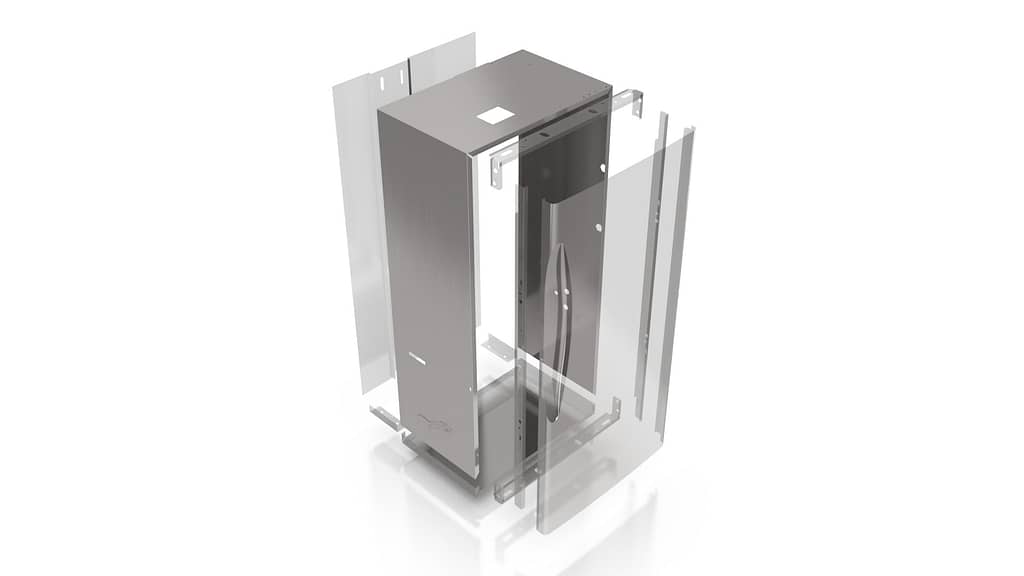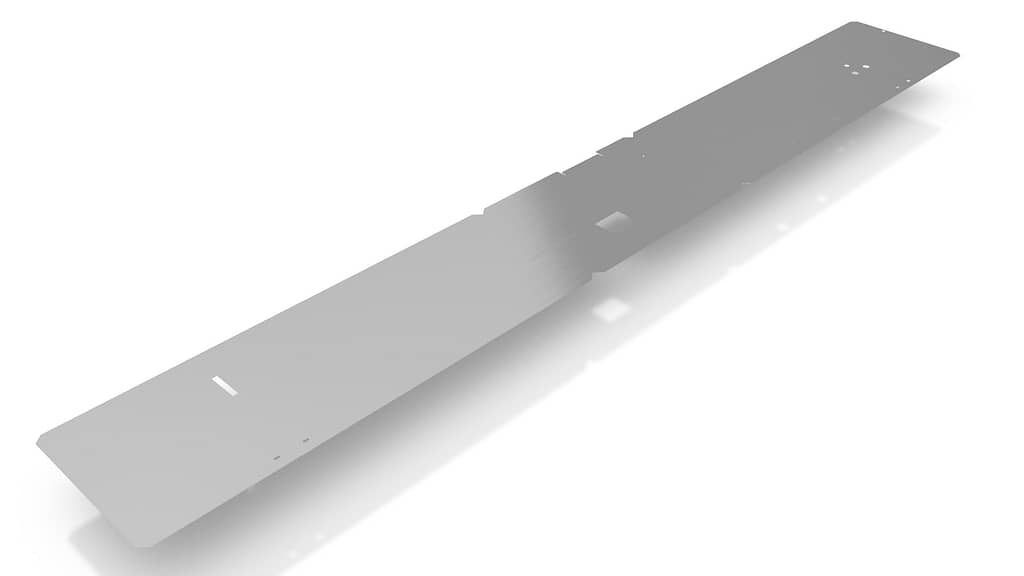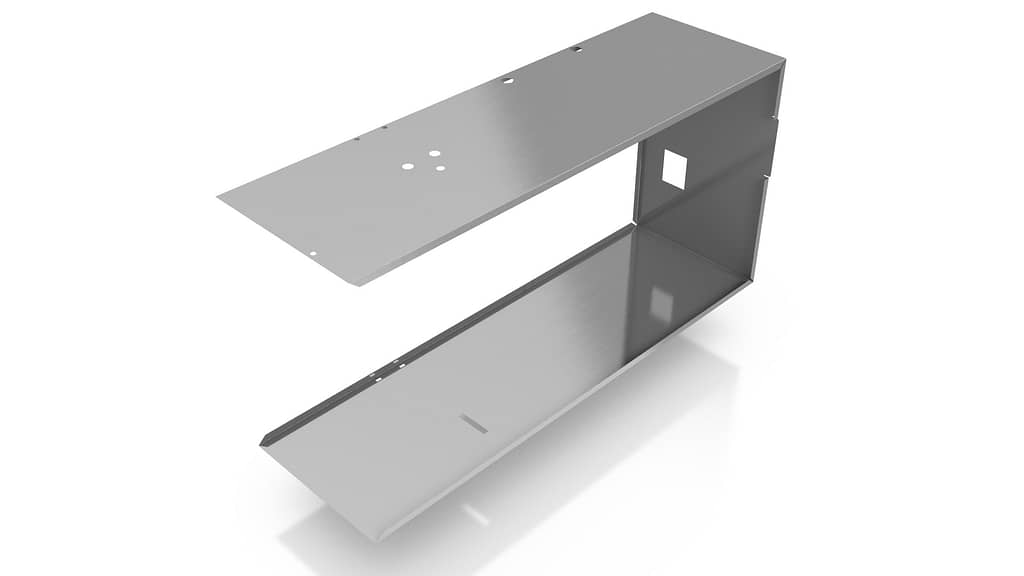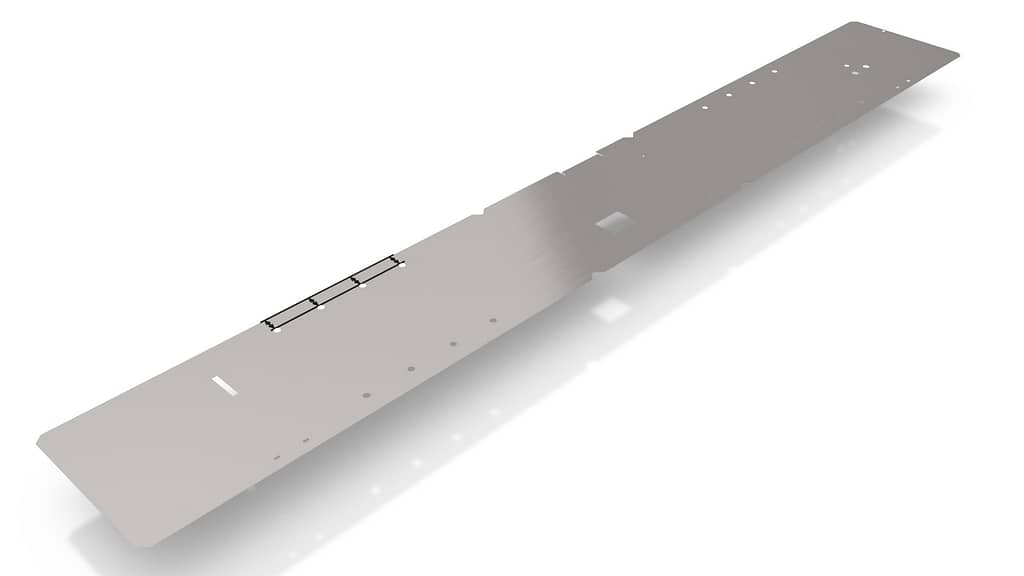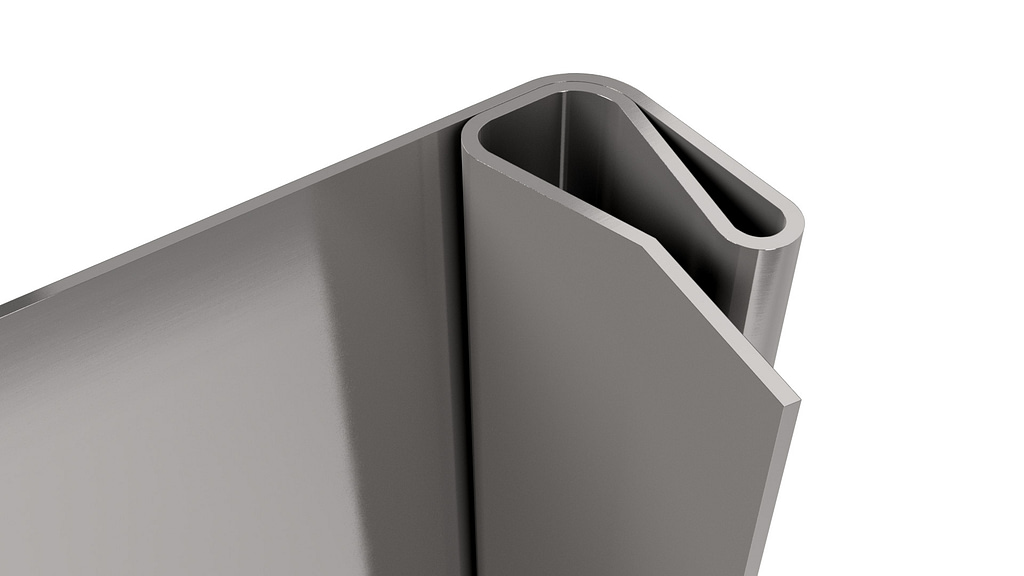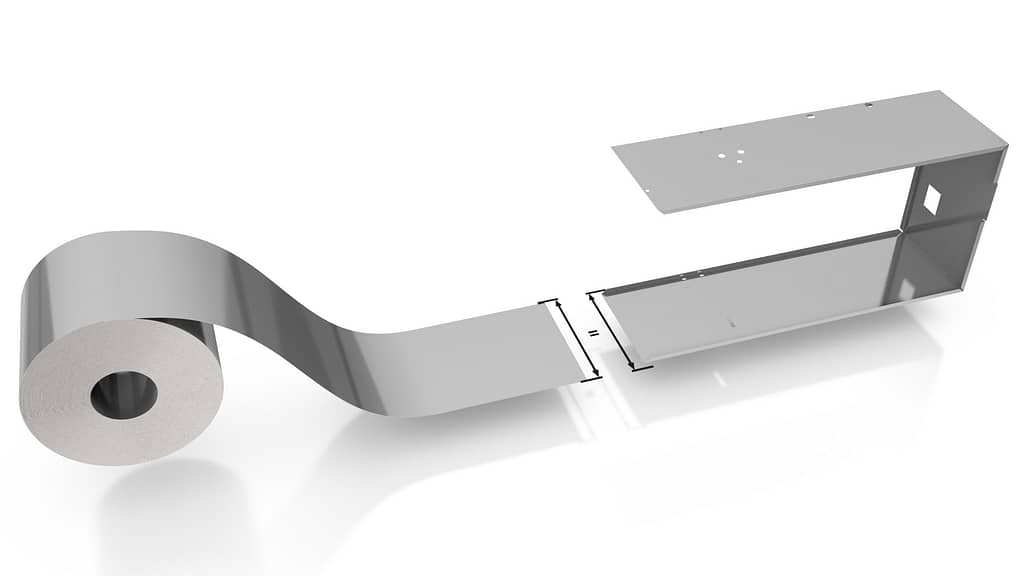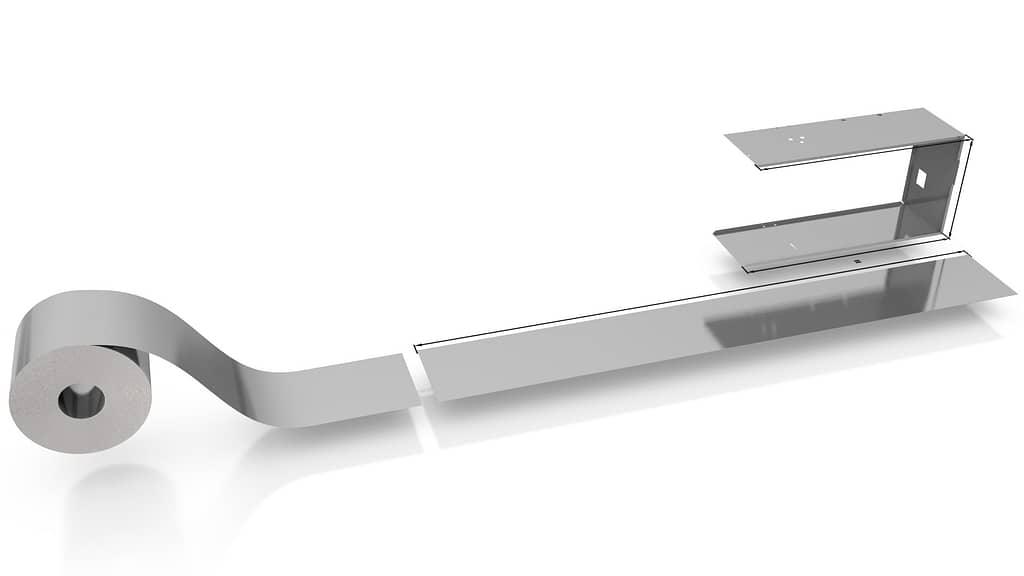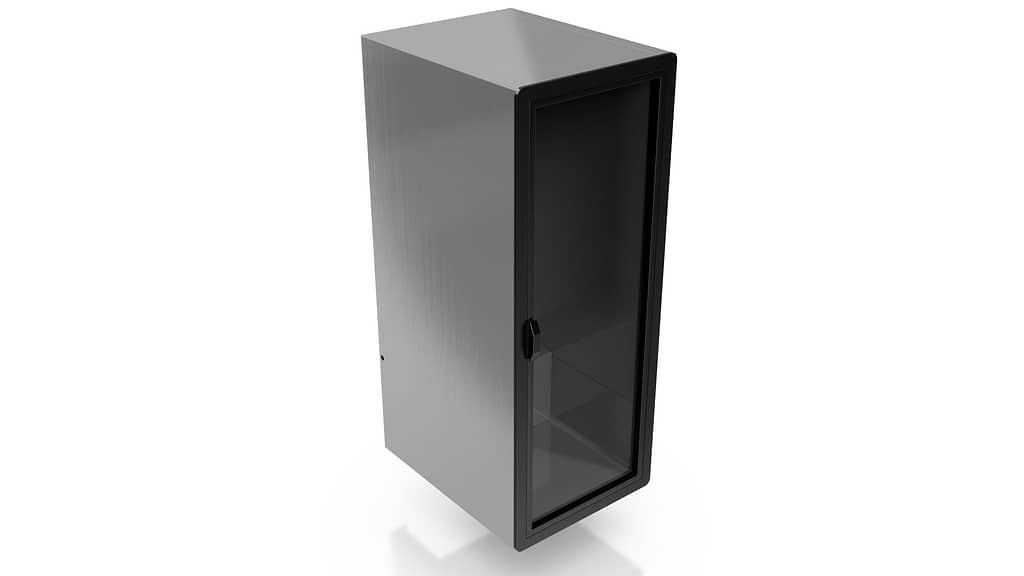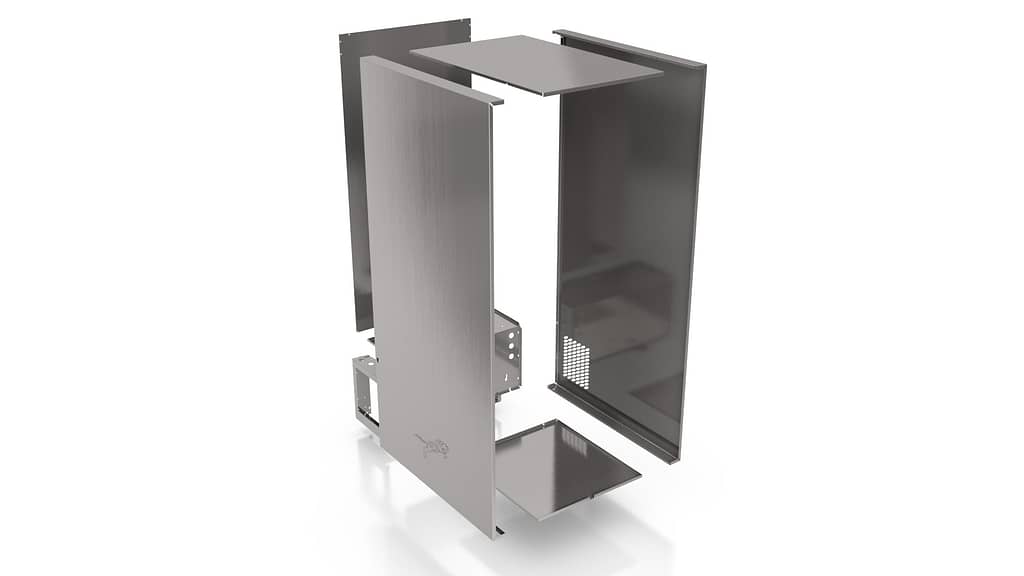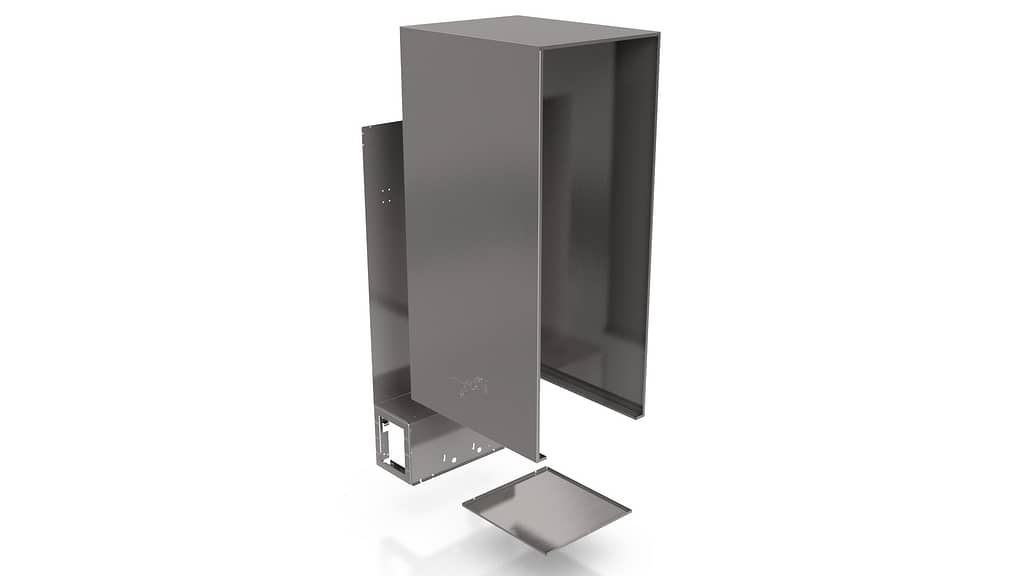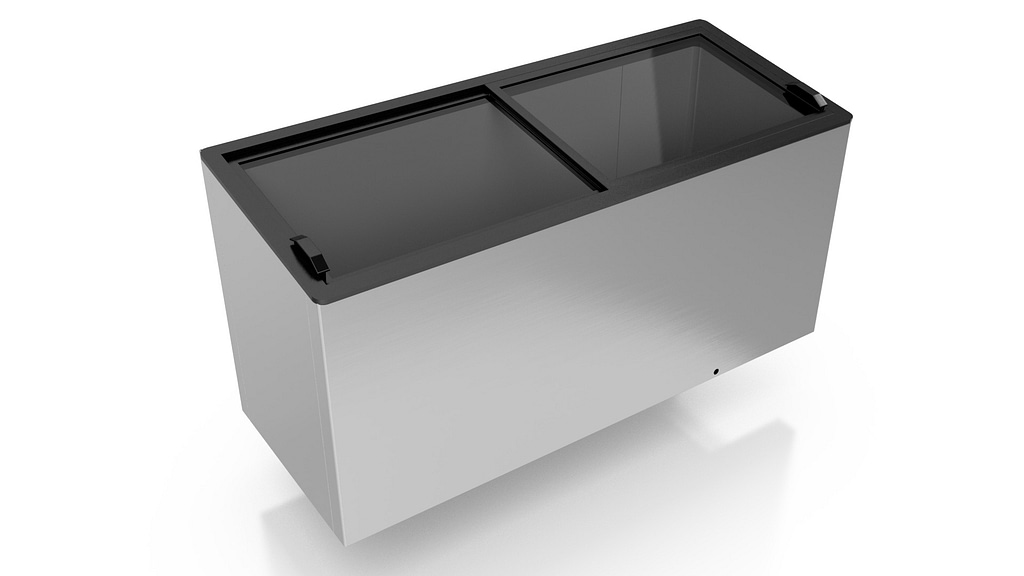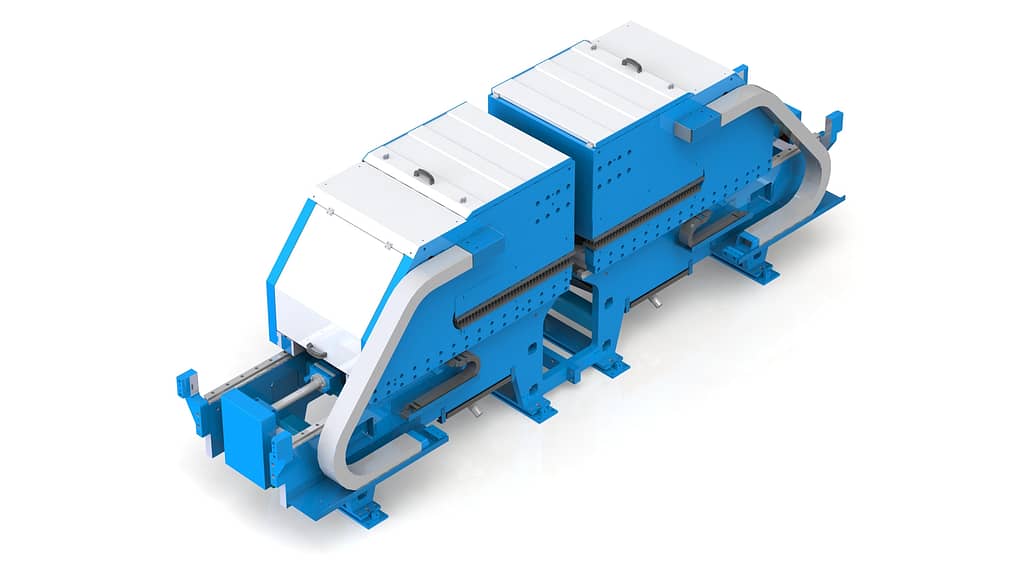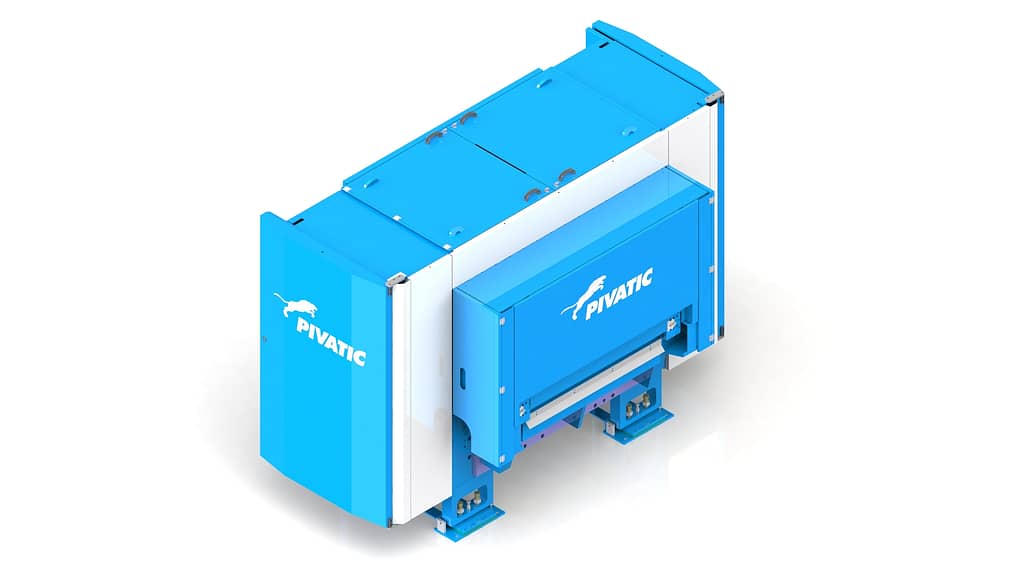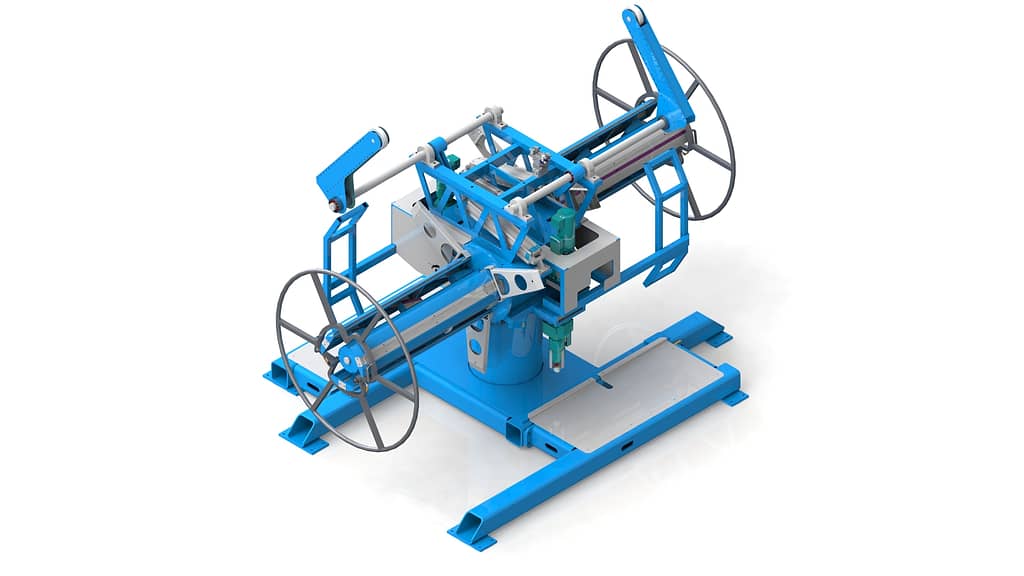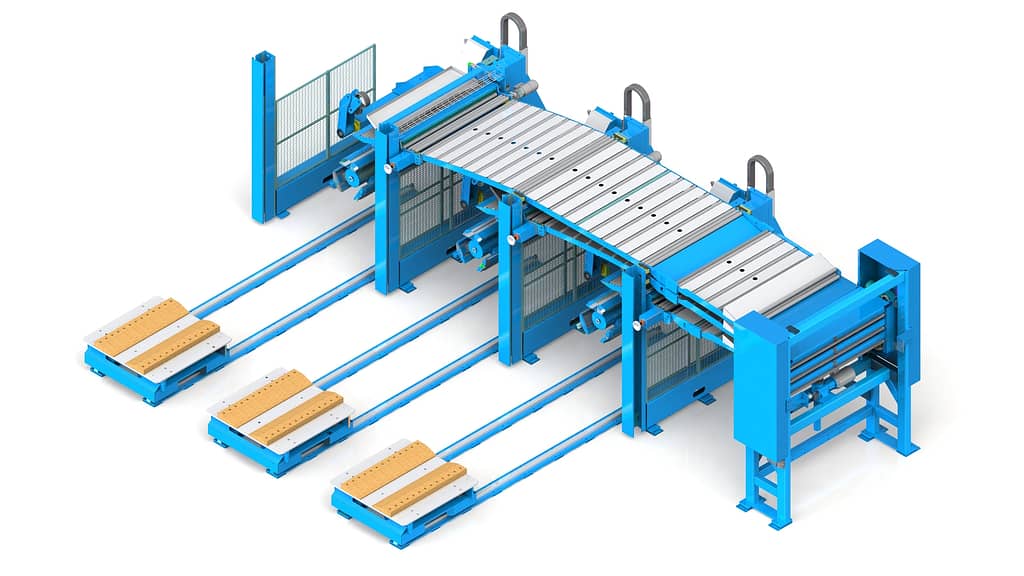Appliances
With Domestic and Commercial Appliances, the end product is handled every day, so the quality and aesthetic standards are high. For both of the industry segments the total volume is high – every household requires at least one refrigerator, freezer and a stove – and all shopping centers/grocery stores are equipped with several refrigerated display cabinets. The material used is typically cost-efficient thin mild steel or pre-painted/coated aluminum, which is sensible but difficult to manage in a production process. We tackle the challenges with automated coil manufacturing solutions.
Other products within the white goods industry are for example ovens, wine cabinets, washing machines, sauna heaters, BBQ equipment, hoods and microwave ovens. We will be focusing on the challenges of refrigerator parts and refrigerated display cabinets.
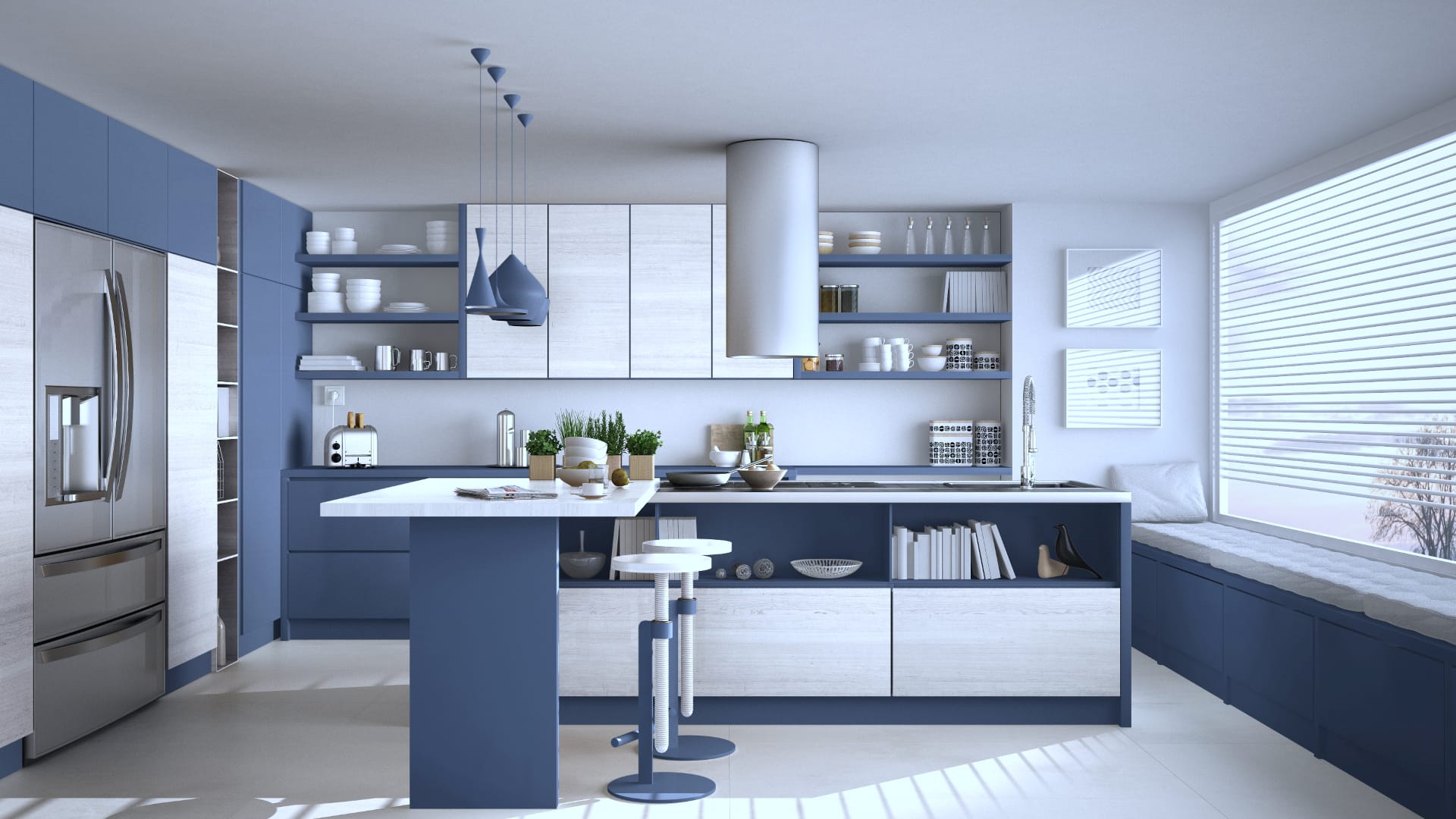 Domestic
Domestic
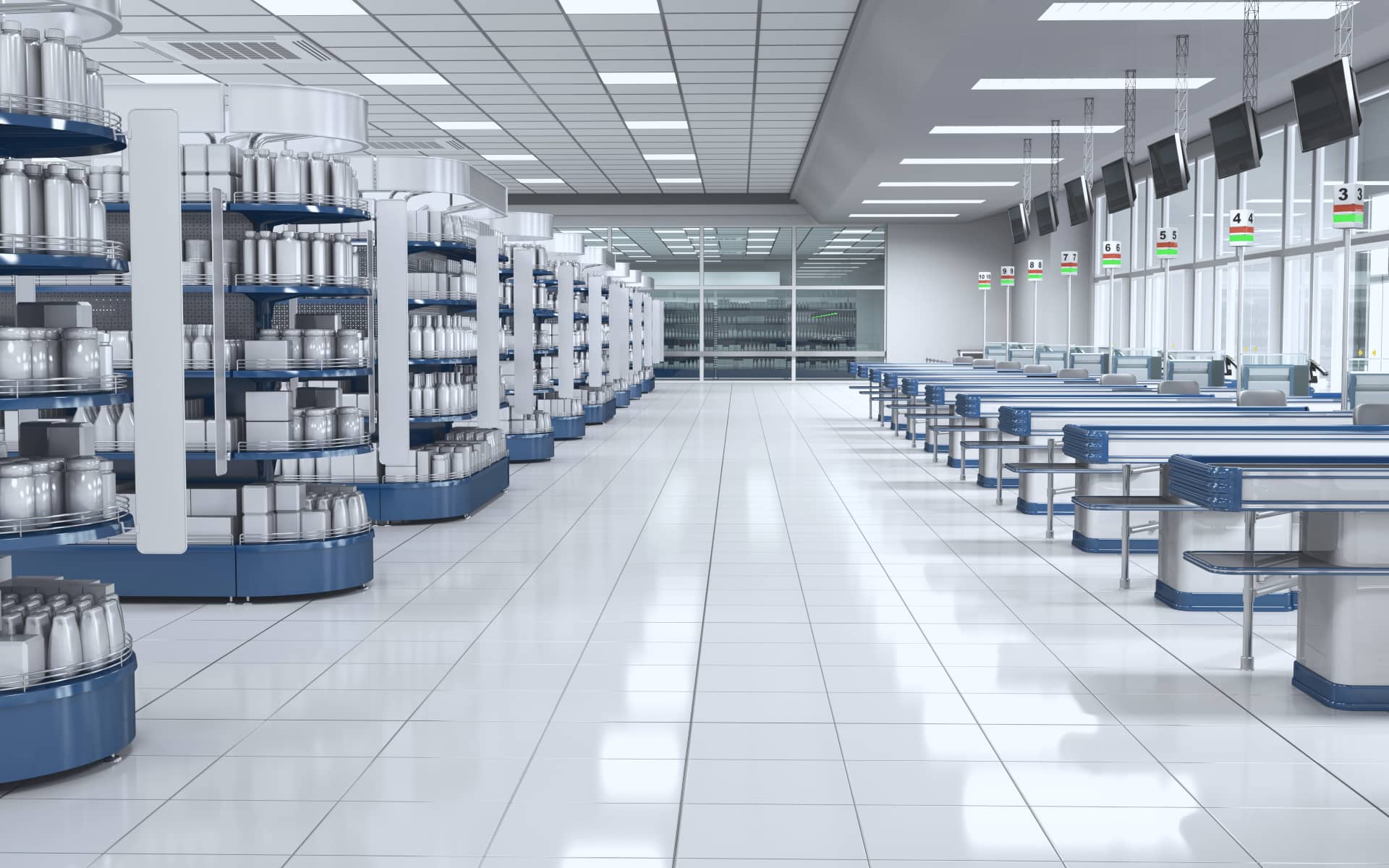 Commercial
Commercial
 Domestic
Domestic
For Domestic Appliances the end product consists of several different parts. A standard way of manufacturing is to have a dedicated machine, line or even a factory for a single type of part. The volume parts are produced from a coil and the special parts are produced from blanks. A customer order from the manufacturers can be a single household, so the way to produce the required parts for orders is one to three months of needed capacity to storage.
The main challenge is that the end product is assembled together from several parts by spring-like mountings. This requires complicated edge bends, and with thin material it is not easy for any production technology.
CHALLENGES AND REQUIREMENTS (Refrigerator Frames)
A refrigerator consists of sheet metal sides, the top-plate, the backplate and the door. The frame consists of the sides and the top-plate, and it can be manufactured from a single sheet metal blank or from three different blanks. When using multiple blanks, the parts are fastened by compression or screws.
Material
For the manufacturing process the material cost is crucial. Because the frame is the exterior part of the end product the customers seek for the cheapest possible sheet metal. This creates challenges for the manufacturing machines and process. A standard choice is thin pre-painted aluminium or mild steel for which the scratches needs to be minimal. Some refrigerated equipment manufacturers also use ‘super mirror stainless steel’ that is a replica-material and creates no additional challenges for the process.
The refrigerators typically have two different depths with several width variations. The height is standardized to around 185cm / 72”. When producing the frame as a single part, the requirement for the blank to be handled is always over 400cm / 157”.
Punching and Bending
The challenges for punching are the variable hole patterns and large openings. The doors can be left-handed or right-handed which requires different holes for the hinges and the latches. The bottom edge of the door is also curved which requires a special type of shear. For these reasons the largest manufacturers originally chose press tooling to manufacture the doors with one press stroke. The challenge for bending is the thin material with complicated profiles and round edges. The door leaflet is typically manufactured to a profile from metal, and the end caps from plastic are added afterwards.
SOLUTION (Refrigerator Frames)
Pivatic’s automatic manufacturing process allows assembly-ready production for the refrigerator frames. The sides and the top will be always made from a single sheet metal blank to a U-profile, so there will be less work in the assembly process.
The focus for Pivatic is coil punching lines, and the cheap material that the customers will choose will have more camber than normal. This is not an issue as the blanks will be cut-to-size before punching. The U-shaped frame manufacturing is only feasible with a coil processing line as the blank length will exceed 400cm / 157” and is very challenging for turret punch presses. The materials from 0.5 mm to 6.0 mm / 24 GA to 4 GA are a standard for Pivatic. Pre-painted or pre-coated materials are also commonly used and the lines always have material-friendly part handling.
For manufacturing the different refrigerator depth variations from coil, Pivatic suggests using product-wide coils when the product range is manageable, or one wide coil to produce all of the size variations. The flexible punching solution has no setup times between order changes during the process. The refrigerator height/width variations require a blank up to 5000 mm / 196” in length. This will be resolved by cutting the correct size blank to length from the coil. It is an option to also cut the blank to width (trim the sides), and this is widely used when manufacturing High Quality refrigerators.
For bending the required profiles, especially the Z-shaped edge, is generally a challenge especially for such long blanks. Pivatic punching solution is integrated to a roll forming machine for edge bending, and a box bending station is added to the end to finish the frame production process. A high-volume simple end product without the Z-bend is an ideal choice for Pivatic’s own bending solutions. High-volume production in large series is Pivatic’s strength, but still maintains the option to run midsize to small series. The lines are equipped with automated stacking devices and are available for integration to more complex storage systems.
CHALLENGES AND REQUIREMENTS (Refrigerator Doors)
A few decades ago, the refrigerators business changed and the products started to appear more decorative. With this the doors started to have round shapes and curved edges, and with the new display panels for temperature indicators and such the parts required large openings. The first new design doors were made of plastic because of the complexity, but metallic doors are becoming a standard.
The product model variation for refrigerator doors is large. The hole patterns for handles and display panel openings, the decorations on the edges, and the door strength requirement all vary with the type. The size variations are only in the width since the refrigerators are a standard height.
The challenges are the same for refrigerator doors as they are for wine cabinet doors and mini fridges. The material chosen needs to be as thin as possible and cost-efficient pre-painted or pre-coated steel. A certain sturdiness is also a requirement to sustain daily usage. This creates challenges for the manufacturing machines and process.
The challenges for punching are the variable hole patterns and large openings. The doors can be left-handed or right-handed which requires different holes for the hinges and the latches. The bottom edge of the door is also curved which requires a special type of shear. For these reasons the largest manufacturers originally chose press tooling to manufacture the doors with one press stroke. The challenge for bending is the thin material with complicated profiles and round edges. The door leaflet is typically manufactured to a profile from metal, and the end caps from plastic are added afterwards.
SOLUTION (Refrigerator Doors)
To meet the challenge of model variations Pivatic offers coil punching lines, bending lines and roll forming. As the height of the doors are a standard and the width is variable, the manufacturing process will use coil width as the door height and cut the blanks from the coil to the same width as the door. If the customer chooses a poor-quality starting material, or if they have a high-quality requirement, the blank can be cut-to-size before punching to eliminate the coil camber. Pre-painted or pre-coated materials are also commonly used and the lines always have material-friendly part handling.
The large number of different holes, hole patterns and openings are punched with flexible Thick Turret or cluster tooling. To increase efficiency with large openings and special shapes, a press tool station can be included with the Thick Turret station. The curved bottom edge of the door can be cut with a special shear or punched with an indexable thick turret tool.
The main benefits to choose Pivatic punching are low tool costs, ease of tool maintenance and the ability to run the production unmanned.
For bending Pivatic uses two traversing bending units to bend both sides at the same time. The refrigerator door differences are automatically handled by the moving units, and the round edges are bent by steps. Due to the variations in material properties, correcting the bending parameters can be done without stopping the line. This would not possible with one-stroke press manufacturing.
 Commercial
Commercial
For Commercial Appliances the end product consists of several different parts, many of which are made of glass, especially in products that are on show for the customers. Pivatic has found its strength in refrigerated display cabinets, both vertical and horizontal. Other end products for which Pivatic can provide solutions are cold rooms and industrial kitchens.
CHALLENGES AND REQUIREMENTS (Refrigerated Display Cabinets)
For both vertical and horizontal cabinets the parts can be pre-painted aluminium, mild steel, or stainless steel. The material used is typically thin, down to 0.35mm thickness. The end products are handled daily so the material surfaces have to stay unharmed. The aesthetics of the products are made with taping or stickers, and both the material and the stickers must withstand both humidity and detergents.
Size variables within the refrigerated cabinets are not standardized. There are cases where the cabinet interior sizes are uniform, but the exterior is always dependant on the amount of required insulation and the equipment in between. For this reason, coil material is typically used.
There are not any major challenges for the punched holes. Even though there are a lot of part size variations, the hole types, sizes and patterns are quite similar. The thermal insulation is typically urethane that has a tendency to swell through the punched holes while assembling the end product.
Vertical Cabinets
Vertical display cabinets have been trending and taking over the market from the horizontal cabinets as they require less floor space. They are very much like the domestic refrigerators, consisting of sheet metal sides, top-plate, bottom plate, back plate, shelves and stiffeners. The back plate functions as the motor protection plate can be either of mild steel or aluminium cardboard. The door is usually made of glass.
The exterior is always different material than the interior, so for the production runs there are no kit production requirements. A vertical cabinet frame consists of the sides and the top-plate, which can be manufactured from a single sheet metal blank or from three different blanks. When using multiple blanks the parts are fastened by compression or screws. There are always ventilation holes or louvers on the side plates or the back plate.
The main challenge for the bending is on the other edge of the frame where the back plate will be attached to. The sprint-like fastening requires a Z-shaped profile that will seal the exterior and interior surfaces with the insulation material in-between.
Frame back plate bend
Horizontal Cabinets
Horizontal cabinets were the backbone of refrigeration in the past. They are still widely manufactured and used as cold air naturally stays contained better than in vertical cabinets. The end products are made of several parts; the main parts being the bottom plate, side plates and a glass sliding cover. The material used is mainly mild steel and partly stainless steel. Similar to the vertical cabinets, the horizontal cabinets also have ventilation holes or louvers on the bottom plate.
For the longer horizontal cabinets, 3000mm / 118” long cabinets are a standard. Some manufacturers produce also 4000mm / 157” cabinets. The end product is assembled from the exterior parts and interior parts with thermal insulation in-between. The shorter cabinets have sufficient cooling efficiency and requires no additional thermal insulation.
SOLUTION (Refrigerated Display Cabinets)
Pivatic automated manufacturing solutions are developed for 0.5 mm to 6.0 mm / 24 GA to 2 GA in punching lines, and up to 3.0 mm / 8 GA in bending lines. Product research and development has also been made for thinner materials.
With automated production lines, the part handling is minimal and material-friendly. There is no need for buffering as it is a one-process solution. The lines can process mild steel, aluminium, and stainless steel, as which can be pre-painted or pre-coated, and the protective film can also be added in the process. The part is transported with specially coated conveyors and clamping devices.
To meet the taping or sticker requirements for aesthetics or to shut the punched holes for thermal insulation leaks, a flexible labeling device can be added to the solution.
Pivatic has both coil punching and blank punching lines to offer, but they have specialized in coil punching lines for decades. As the refrigerated cabinets have a lot of size variables, it is most cost-efficient to do the manufacturing from coils. If the material type varies a lot the preferable choice is to have part-wide coils, but if the parts are mostly from the same material, all the parts should be run from one wide coil. With a flexible coil punching solution it is possible to produce all of the parts required for the end product. When the end product has high quality requirements, it is feasible to produce a dimensionally accurate blank in the line with cut-to-size before punching.
For punching the cabinets Pivatic has several beneficial factors. They have high experience with thin sheet metal handling and offers a collection of punching technologies. The starting point us usually a flexible punching center with thick turret tools set in quick-change cassettes, that can also be equipped with cluster or forming tools to create the standardized cabinet ventilation openings. For an explicit cycle times additional C-press stations or a perforating press can be included with the flexible punching center.
The common feature for both cabinet types is that the exterior and interior parts are from different material. Depending on the daily series sizes, Pivatic suggest a traditional decoiling solution, a double decoiler or a multi-decoiler. They can all be equipped with a choice of coil storage/buffering modules. For a very high-volume production Pivatic suggest separate lines for the exterior and interior parts.
A specific benefit for vertical cabinets is that Pivatic will always produce the frame (sides and the top) from one blank, thus reducing the steps in the process and saving time in the assembly. The long blank up to 4500 mm / 177” will be cut-to-size from coil and punched complete. The punched part is then sent to an integrated roll forming process, with or without buffering, and finally bent to the box-shape. For horizontal cabinets Pivatic has focus on the large bottom plate production, but the with the same line the sides plates can also be manufactured.
To get tailored solution to fill your manufacturing needs, please contact our technical sales team.

